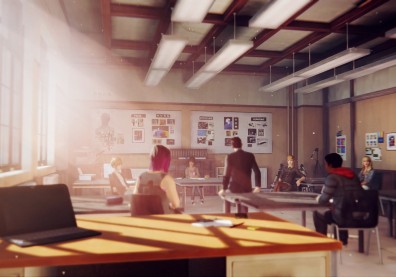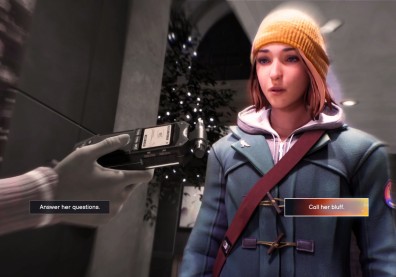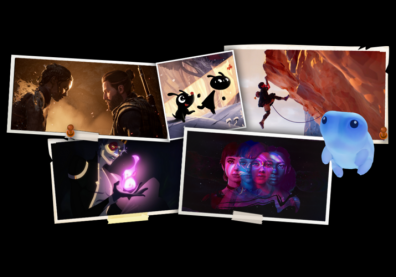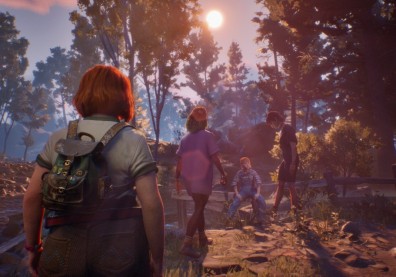Before the NYCC this week Square Enix hosted a preview night where they demoed a few select titles to the media. There were plenty of sequels and remakes on display but if you were patient enough to weather all that noise, there, tucked into a corner lovingly recreated to look like your high school room (or your high school girlfriend's), was Life Is Strange.
Dragon Ball Xenoverse Hands On Impressions
The game feels out of place amidst the hustle and bustle of established properties. We are in the age of Brands and Branded Content, where terms like 'universes' are bandied about; a world where there are five new Assassin's Creed titles out within the same year. So to call Life Is Strange, well...strange, is an understatement. It's an outright anomaly. It also does the game a huge disservice. The strangeness is backed up with the promise of an exciting new title.
Jean-Maxine Moris, creative director for DontNod Entertainment, the game's developer was on hand alongside art director Michel Koch to take us through the nostalgic mystery of the game. The demo was played by Koch, with narration and a real-world assist from Moris (he held up photos, which was oddly effective) and is the same content shown off back in August during Gamescom in Cologne. Moris, looking a bit run down (he's been doing this all day) still sounded exicted for what he calls his 'AAA indie game'. If that sounds like an oxymoron, just wait. You will understand why.
Experience Marvel 4D Experience!
A group of journalists sat down in beanbag chairs and admired the attention to detail of the 'room'. The decorations in the demo space were key in helping connect the player (and in our case, viewer) to the events on screen. It made it real. Life Is Strange is a game that will draw you in, but it won't overwhelm you with bright lights and explosions. Being in the right frame of mind for a story that is just a little left of ordinary is key to the experience.
The demonstration began with the game's trailer, in which we are introduced to Max, our awkward teenage heroine and her supporting cast, finally revealing that Max has, for reasons unknown, the ability to travel back in time. Life Is Strange is a game of endless choice, but the Rewind mechanic asks; how good are your choices if you never stand by them?
Koch guided Max through an encounter with Chloe, Max's former best friend before the protagonist moved away. In the five years since, the two girls have taken very different trajectories: Max has remained optimistic, though shy and introverted; Chloe, on the other hand, is mad at everything. After her dad died, Chloe's mother took up with a not-so-great guy and she has been rebelling ever since. She has a full sleeve tattoo and an eagerness to toke up when things go wrong, which they have for a long while now. Max, on the other hand, is normal, shy and possessed of gangly limbs like a lot of teenage girls. She moves with a hesitancy you don't usually find in games these days.
The two characters are at Chloe's house because Max's polaroid camera was broken in a scuffle, but beyond repairing the antiquated piece of equipment, there is no other plot point assigned to the demo. Life Is Strange, like Life Itself (TM) is less about the plotlines. "It's like Telltale games," Jean-Maxine explains, "one main storyline that is moving forward, key events will be triggered, a couple of different endings. What's going to change, depending on your personal perspective, is your relationships with people."
Max wanders through Chloe's bedroom and house, so familiar and yet so different to the girl, interacting with various objects along the way. Knocking over a favorite item of Chloe's will elicit anger, while failing to hide in the closet in time will drastically change the nature of an argument Chloe has with her stepfather. Of course, as Jean points out, you can change the flow of events, or rather 'the flow of reactions'. Max will still progress from Point A to Point b, it is the little things that will affect the story you experience.
"I think it's about finding the right balance between genuine and perceived choice, and genuine and perceived repercussions." Moris says, "So it's about making you feel like you're having an impact, but we are the ones pulling the strings and we know exactly where you are going. So for me, it's about to me it's about customizing your perception of the events, rather than changing the events themselves."
All of your choices can affect not just the current chapter, but the entire five-episode season. Obviously, things can get out of hand really quick for the programmers and writers at Dontnod. "We have this huge excel file and we also have the graph," said Koch, "There's a polarity on every choice you input into the game that can have a positive or negative impact on the characters, and we just keep track of that and with every new sequence that comes up, we make sure that if you've done all negative choices, does the scene still make sense?"
"It's given us headaches," Koch was quick to add.
In practice, Life Is Strange feels like the culmination of the morality system that more and more games have implemented over the years. The game has a checkpoint system, and while in-between points, you can Rewind as far back as you want to go.
Visually, Life Is Strange possesses a rose-tinted tone. Everything about the art direction is meant to evoke those wonderful, terrible high school years, where everything felt important, even if you never knew why.
"We are dealing with a coming of age story and nostalgia is one of the big themes," Koch said. "We really wanted the player to be able to project some of his own experience and memory in the game."
The game is visually impressive, but not realistic. The impressionistic style allows players to imprint their own feelings onto the screen. "When you are looking at an overly realistic picture, there is almost no room for imagination and interpretations for which you're looking at," Koch adds.
To achieve the desired effect, Koch and the 40-person team at Dontnod have been painting a lot of the photographs (which play a significant part to Max's character) by hand. "We are not using any photographs for the texture," Koch noted. "We really wanted the game to have this expressionistic rendering instead of realistic. Every texture is hand painted."
Each chapter should take around two hours to complete, according to Moris. However, the replayability factor is quite high on account of the webbed-like structure of the narrative. You can play one game through as a jerk or a saint, and see what happens. They hope to have you covered.
The first episode of Life Is Strange is scheduled to be released in early 2015 for all systems, except the Wii U. They hope to have the four additional chapters out approximately every six weeks after that. While they could not give out pricing information, they assured us that the price point will be "Telltale-esque". A season pass will be available, too.
Life Is Strange feels like an old photograph full of memories, a feeling I hope remains when we can get our hands on it. Though the direct experience of Max, that of a teenage girl, is one I never had, everyone has experienced the kind of isolation and uncertainty you get when you're someplace new; or someplace forgotten. You can feel the hormones coursing through the blood of the game, pumping it full of equal parts awkwardness and clarity. As Max rewound time, I wondered about the events in my life, the little choices and which of them, over ten years later, still affected me. Would I go back and change them if I could? I cannot say I ever had that feeling from a game before.









